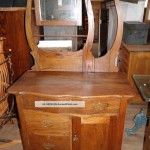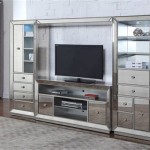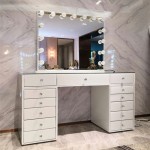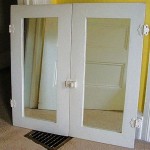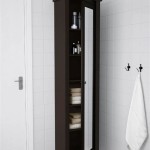How to Remove a Large Mirror Glued to a Wall
Removing a large mirror glued to a wall can be a challenging task, requiring patience and the right tools. Improper removal can lead to damage to the wall, the mirror, or even personal injury. This guide outlines the steps involved in safely and effectively removing a large glued mirror.
Preparing the Area
Before beginning the removal process, it is crucial to prepare the surrounding area. This protects the floor and any nearby furniture from damage. Laying down drop cloths or old blankets is recommended. Covering the floor with a protective layer cushions falling glass shards and absorbs adhesive residue. Furniture should be moved away from the work area to provide ample space for maneuvering. Wearing safety glasses and work gloves is essential to prevent injuries from broken glass and sharp tools.
Weakening the Adhesive
Most large mirrors are affixed to walls using strong adhesives. Weakening the adhesive bond is essential for successful removal and reduces the risk of the mirror breaking. Several methods can achieve this. Applying heat to the adhesive with a heat gun or hairdryer can soften it, making it more pliable. However, caution is required to avoid overheating the mirror, which can cause it to crack. Alternatively, a thin wire or fishing line can be used to saw through the adhesive. Starting at one corner, carefully work the wire behind the mirror, using a sawing motion to cut through the glue. Dental floss can achieve a similar effect. Using adhesive removers specifically designed for mirrors is another option. These products are applied to the back of the mirror and allowed to penetrate the adhesive, breaking down its bond. Always follow the manufacturer's instructions when using these products.
Removing the Mirror
Once the adhesive is sufficiently weakened, the mirror can be removed. If using the wire or fishing line method, continue sawing until the mirror comes loose. If using heat or an adhesive remover, suction cups can be applied to the mirror's surface to provide leverage. Gently pull on the suction cups while applying even pressure across the mirror's surface. If the mirror is particularly large or heavy, enlisting the help of another person is highly recommended. A pry bar can be carefully used to assist in separating the mirror from the wall, but extreme care must be taken to avoid damaging both the mirror and the wall. Start at a corner where a gap has been created and gently pry the mirror away from the wall, gradually working along the edges.
Dealing with Stubborn Sections
Some sections of the mirror may be more stubbornly adhered than others. For these areas, repeating the adhesive weakening process may be necessary. Applying more heat, using additional adhesive remover, or continuing to saw with wire can help loosen these stubborn sections. Patience and persistence are key. Avoid forcing the mirror off the wall, as this can cause it to break. Concentrated effort on the stubborn areas, combined with the previously described methods, will eventually free the mirror.
Cleaning the Wall
After the mirror is removed, adhesive residue will likely remain on the wall. This residue can be difficult to remove, but several techniques can be effective. A scraper or putty knife can be used to carefully remove the bulk of the adhesive. For remaining residue, adhesive removers can be applied according to the manufacturer’s instructions. Testing the remover on an inconspicuous area of the wall first is recommended to ensure it doesn't damage the paint or wall surface. Alternatively, a solution of warm water and dish soap can be used to soften the adhesive, making it easier to remove with a sponge or cloth.
Repairing Wall Damage
Removing a large glued mirror often results in some degree of wall damage. This may include small holes, scratches, or areas where the paint has been pulled off. Minor imperfections can be filled with spackle or drywall compound. Once the compound is dry, it can be sanded smooth and repainted to match the surrounding wall. For larger areas of damage, patching the drywall may be necessary before repainting. Consulting a professional for significant wall damage is advisable to ensure proper repair.
Disposing of the Mirror
Proper disposal of the mirror is crucial to prevent injuries. If the mirror is intact, it can be donated or repurposed. However, if the mirror is broken, it should be wrapped carefully in thick material like cardboard or heavy blankets. Clearly label the package as “Broken Glass” to warn others of the potential hazard. Contact local waste management services for guidance on proper disposal procedures in your area. Some municipalities have specific regulations for broken glass disposal to ensure safety and environmental responsibility.

How To Remove A Mirror Glued The Wall Forbes Home

How To Remove A Large Mirror That S Glued The Wall Emerging Home

How To Safely And Easily Remove A Large Bathroom Builder Mirror From The Wall Site Title

How To Safely And Easily Remove A Large Bathroom Builder Mirror From The Wall Site Title

How To Remove A Bathroom Mirror Lowe S

How To Safely And Easily Remove A Large Bathroom Builder Mirror From The Wall Site Title

How To Remove A Wall Mirror 11 Steps With Pictures Wikihow

How To Safely And Easily Remove A Large Bathroom Builder Mirror From The Wall Site Title

How To Remove A Wall Mirror 11 Steps With Pictures Wikihow

Large Mirror Removal Safely

